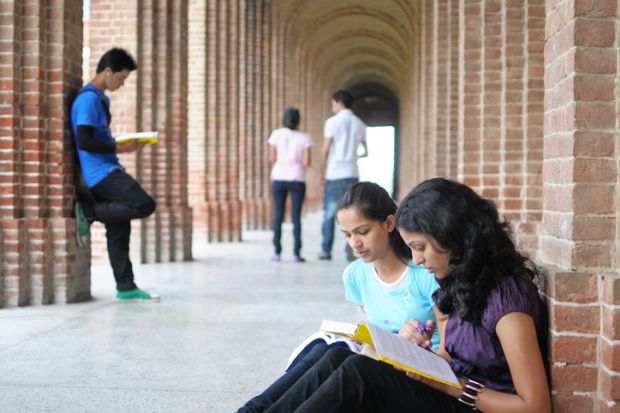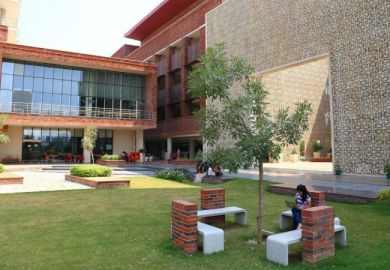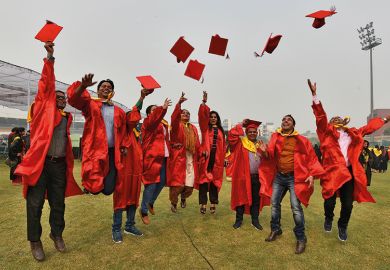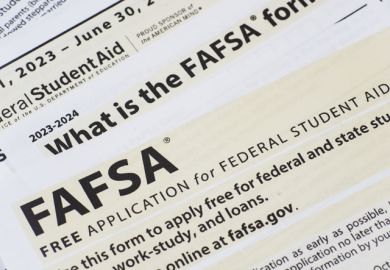Given the lack of financial support for students in India, the decision to enter higher education demands to be taken carefully. However, the 27 per cent of school-leavers who currently decide to go ahead – 38.5 million people – suffer from an information dearth.
The country’s 1,043 universities, 42,343 colleges and 11,779 stand-alone institutions have vastly different quality levels, in terms of both infrastructure and performance. For instance, in India’s National Institutional Ranking Framework (NIRF), the top 100 institutions score about 50 per cent of the total score. But the NIRF only lists the top 100 institutions in each category. Beyond those, reliable institutional information is hard for students to find. Official websites, unsurprisingly, present a polished view of on-the-ground realities, the typical inaccuracy of which students only discover after admission. The 21 institutes that the University Grants Commission recently declared to be fake are just the tip of the iceberg.
Although student satisfaction has not been researched properly in India, it is widely believed to be low. Even in established universities, students frequently complain about lack of trained teachers, poor infrastructure and lack of support. Over the years, Indian universities have seen frequent protests against socio-economic conditions in the country, but in recent years, there has been an increase in the number of protests specifically against institutional heads by students who do not believe they are receiving what the brochures promised and consider themselves to be suffering as a result of policy experimentation or, alternatively, policy stasis.
One source of tension is cost. Most university brochures contain a table of prices, but the prices that students are actually required to pay are typically higher – often simply because the brochures are not regularly revised. This is one example of how India lags behind in terms of meeting the informational needs of the digital era. Another is the opaque information they give on any tests that applicants must sit (such as the National Eligibility Test for doctoral scholarships) and the frequently unreachable contact numbers and email addresses they list for those seeking further information.
But even if Indian universities vastly improved their digital communications, the information gap would remain huge for the many poorer applicants. As the pandemic-era switching of teaching to digital modes underlined, many Indians still do not have access to electronic devices and reliable internet connections. This access divide gives richer applicants a huge advantage in terms of access to whatever information, however flawed, is available.
What can be done? One suggestion is for national and/or state governments to subsidise private providers of quality information. Moreover, they could institute a legal requirement for higher education institutions to disclose certain information about their quality on various measures.
The national government could also introduce regulations to ensure that published and advertised information is reliable. For instance, universities should be required to clearly indicate the number of places they have available and accurately describe both their student facilities and their fee structures. Minimum standards could be enforced by a dedicated standard-setting body.
Moreover, there need to be mechanisms to regularly and rigorously check whether universities avail their students of everything they promised in their adverts and brochures, in terms of teaching and research quality. The current oversight arrangements, administered by the National Assessment and Accreditation Council (NAAC), are not sufficient. It is evident that institutions focus on the particular indicators audited by the NAAC team during their infrequent visits. They repaint and refurnish their buildings, suddenly come up with long-promised student equipment and fill vacant faculty positions with contractual staff. The result is that NAAC reports and ratings do not give a true picture of institutional quality. More versatile, dynamic monitoring is demanded, carried out every year without fail.
But, really, improvement ought not to depend on compulsion. Institutions themselves should take it upon themselves to provide a real, up-to-date picture of their present infrastructure, faculty availability, funding and financial aid programmes. Only when they do so will Indian students be able to make appropriate choices about whether and where to study.
Kaibalyapati Mishra is a junior research fellow and Krishna Raj is a professor of economics at the Institute for Social and Economic Change, Bangalore.
POSTSCRIPT:
Print headline: Accurate information needed
Register to continue
Why register?
- Registration is free and only takes a moment
- Once registered, you can read 3 articles a month
- Sign up for our newsletter
Subscribe
Or subscribe for unlimited access to:
- Unlimited access to news, views, insights & reviews
- Digital editions
- Digital access to THE’s university and college rankings analysis
Already registered or a current subscriber? Login








